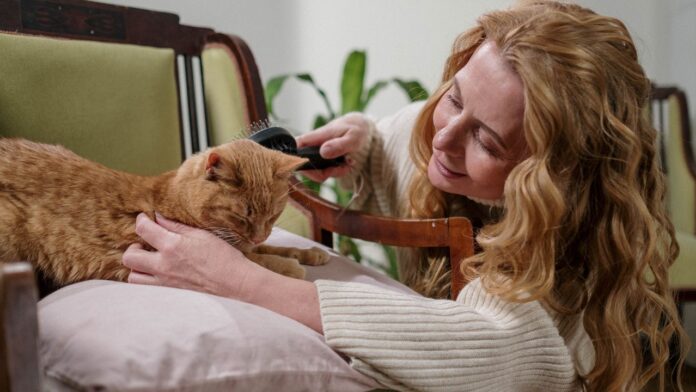Indoor cats, with their playful antics and comforting presence, have captured the hearts of many pet owners. While they might not roam the great outdoors, there are crucial aspects to consider to ensure their well-being and happiness.
In this article, we’ll delve into six essential things you need to know about indoor cats. By understanding their needs and providing a nurturing environment, you can create a fulfilling life for your feline friend.
1. Creating a Safe Indoor Environment
One of the first things to consider is the safety of your indoor space. Cats are naturally curious and agile, which can sometimes lead them into precarious situations. Eliminate potential hazards such as toxic plants, small objects that could be swallowed, and open windows without screens. Make sure to have a large litter box for your cats.
Providing stimulating toys, scratching posts, and cozy hideaways can help satisfy their instincts and reduce the likelihood of boredom-related behaviors. Ensure your home is well-suited for a feline friend by securing loose cords, anchoring heavy furniture, and creating designated spaces where your cat can safely explore.
Make sure to keep harmful chemicals and substances out of reach, and install window screens to prevent accidental falls.
2. Maintaining Proper Nutrition
Indoor cats have different nutritional needs than their outdoor counterparts. Since they’re less active, they may be prone to weight gain. Choose a high-quality, balanced cat food formulated for indoor cats.
Ensure you’re feeding appropriate portion sizes to prevent overeating. Consult your veterinarian to determine the ideal feeding schedule and any dietary supplements that may be beneficial for your indoor cat’s overall health.
Additionally, provide fresh water at all times and monitor your cat’s weight and body condition regularly to make necessary adjustments to their diet. Monitoring your cat’s weight and body condition closely can help you detect any changes and make informed decisions about their diet.
3. Ensuring Adequate Exercise and Mental Stimulation
Indoor cats may not have the same opportunities for physical activity as outdoor cats, but exercise and mental stimulation are equally important. Engage your cat with interactive toys, puzzle feeders, and climbing structures to keep them active and mentally engaged.
Spend quality playtime together, using feather toys, laser pointers, and other stimulating objects that encourage your cat to jump, chase, and pounce. Consider rotating their toys regularly to keep their interest piqued and introduce new experiences.
You can also engage your cat’s mind by teaching them tricks or providing them with food puzzle toys that encourage problem-solving.
4. Managing Behavioral Enrichment
Indoor cats can sometimes exhibit behavioral issues due to boredom or lack of environmental stimulation. Provide opportunities for enrichment by creating indoor exploration spaces.
Set up perches near windows for bird watching, use puzzle toys that dispense treats, and introduce new textures and scents to pique their curiosity. Regular interaction and playtime with you can also help prevent behavioral problems.
Furthermore, consider creating a predictable daily routine that includes play sessions, feeding times, and relaxation periods to provide structure and reduce anxiety. Remember that cats thrive on routine, so establishing a consistent daily schedule can greatly contribute to their well-being.
5. Regular Veterinary Care
Regular veterinary care is crucial for indoor cats to ensure they’re in optimal health. Schedule annual check-ups with your veterinarian for routine examinations, vaccinations, and preventive care. Indoor cats can still be susceptible to certain health issues, such as dental problems and obesity.
By staying proactive with veterinary visits, you can catch and address any potential concerns early. Additionally, discuss preventive measures with your vet, such as dental cleanings, parasite control, and vaccinations tailored to your indoor cat’s lifestyle. Your vet can also guide dental care routines and weight management strategies to keep your indoor cat healthy.
6. Addressing Emotional Well-Being
While indoor cats are protected from outdoor dangers, they can still experience feelings of boredom and loneliness. Spend quality time bonding with your cat through grooming, interactive play, and cuddles.
Consider adopting a companion cat if it’s feasible for your household, as feline companionship can provide emotional support and alleviate feelings of solitude. Create a stimulating environment with opportunities for exploration and mental engagement, such as puzzle toys, interactive games, and window perches that allow your cat to observe the outside world.
Additionally, provide plenty of vertical space in your home, such as cat trees and shelves, so your cat can explore and find cozy spots to relax.
Bottom Line
Indoor cats bring joy, comfort, and companionship to our lives, and it’s our responsibility to ensure they thrive in their indoor environments. By understanding their unique needs for safety, nutrition, exercise, mental stimulation, healthcare, and emotional well-being, we can create a nurturing and enriching life for our feline friends.
Remember that each indoor cat has its personality and preferences, so be attentive to their cues and adapt your approach to provide the best possible quality of life.
Also Read:

